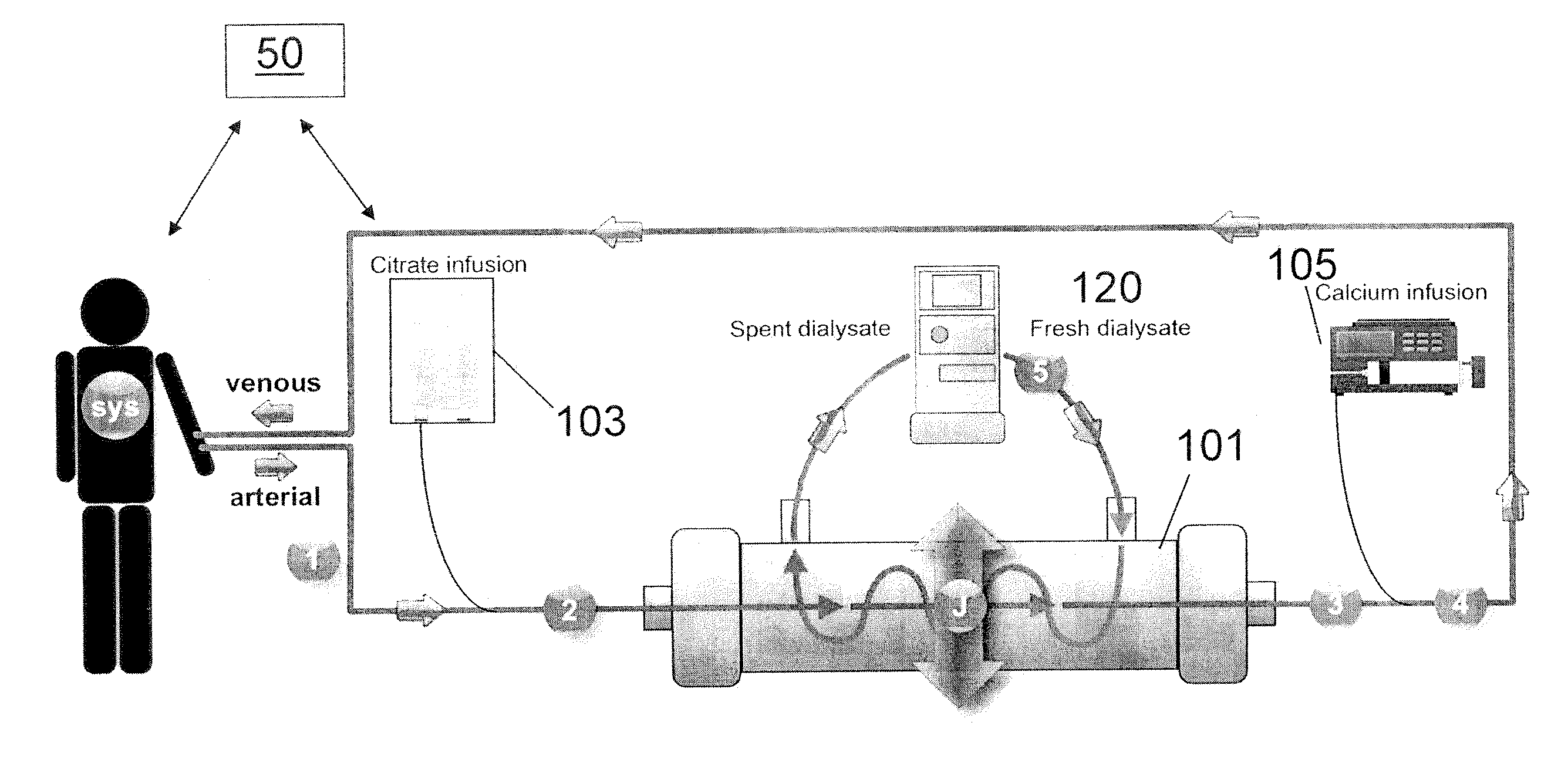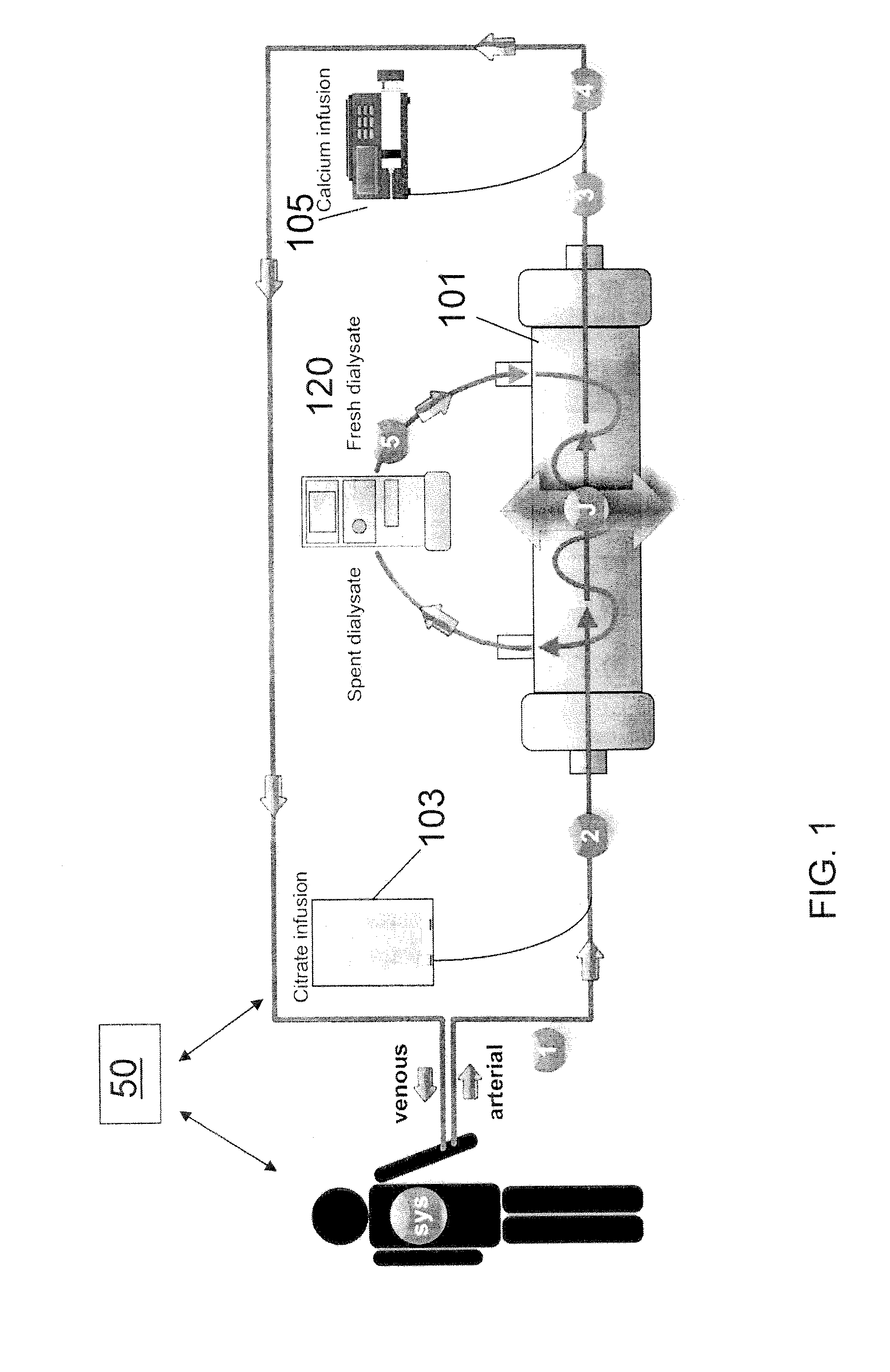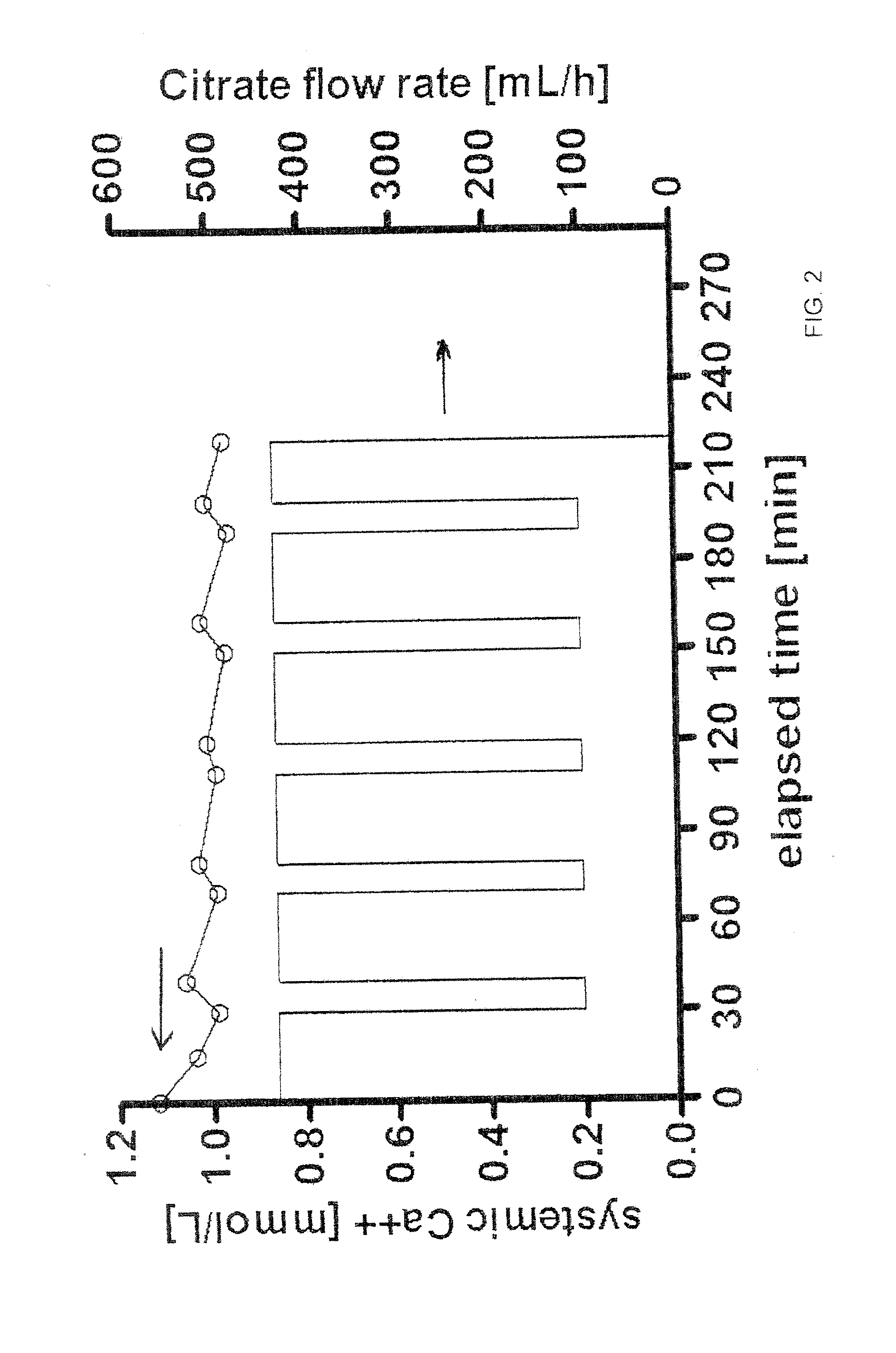Methods of Regional Citrate Anticoagulation Dialysis
a technology of citrate and dialysis, which is applied in the field of regional citrate anticoagulation dialysis, can solve the problems of occlusion, malfunction of extracorporeal circuit, loss of ability to remove water and minerals, and death of people, so as to reduce the risk of bleeding, and eliminate the downside of heparin anticoagulation
- Summary
- Abstract
- Description
- Claims
- Application Information
AI Technical Summary
Benefits of technology
Problems solved by technology
Method used
Image
Examples
Embodiment Construction
[0030]Turning to FIG. 1, in one embodiment, a method of performing regional citrate anticoagulant dialysis of a patient's blood includes flowing blood from and back to the patient through an extracorporeal circuit including a dialyzer 101 having semi-permeable dialysis membranes and a dialysate chamber surrounding the membranes. The semi-permeable dialysis membranes can be arranged in various configurations, such as, for example, bundles of hollow fibers made of a polymer, such as, for example, polysulfone. The blood flow rate through the extracorporeal dialysis circuit can be in a range of about 100 ml / min to about 1000 ml / min, preferably in a range of about 400 ml / min to about 500 ml / min.
[0031]The method further includes flowing a dialysate 120 containing calcium and citrate through the dialysate chamber of the dialyzer 101, preferably in a counter-current fashion. The amount of calcium contained in the dialysate 120 is sufficient to reduce the need for calcium to be added to the ...
PUM
 Login to View More
Login to View More Abstract
Description
Claims
Application Information
 Login to View More
Login to View More - R&D
- Intellectual Property
- Life Sciences
- Materials
- Tech Scout
- Unparalleled Data Quality
- Higher Quality Content
- 60% Fewer Hallucinations
Browse by: Latest US Patents, China's latest patents, Technical Efficacy Thesaurus, Application Domain, Technology Topic, Popular Technical Reports.
© 2025 PatSnap. All rights reserved.Legal|Privacy policy|Modern Slavery Act Transparency Statement|Sitemap|About US| Contact US: help@patsnap.com



